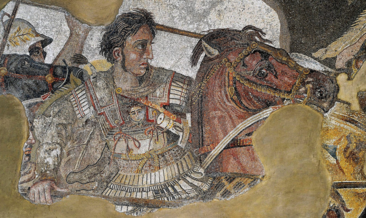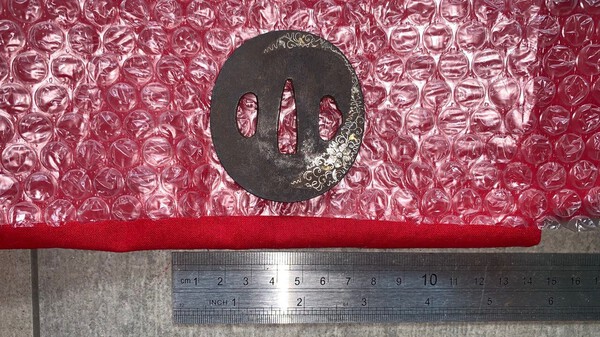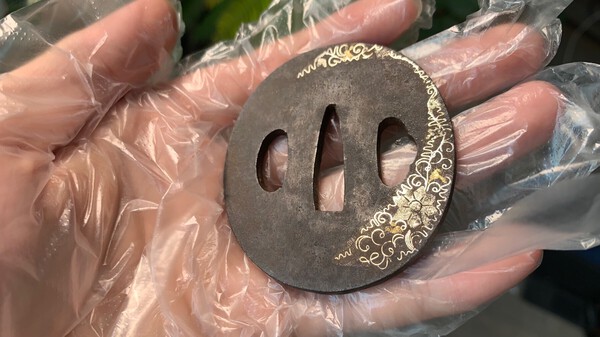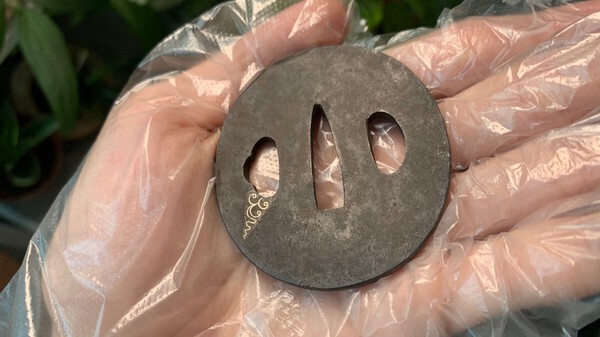
Xander Chia
Members-
Posts
132 -
Joined
-
Last visited
Content Type
Profiles
Forums
Events
Store
Downloads
Gallery
Everything posted by Xander Chia
-
I’ve been thinking about getting another tsuba for awhile but I’m still unsure on how to go about identifying fakes. As of now I can tell which are obvious fakes (at least I hope I can) by seeing if they have casting bubbles/lines. Any other tips are welcome! I found a few that I am interested in but unsure of. I’m hoping to know whether they are genuine or not. On a side note, should I post all future enquiries on the same thread or create new ones?
-
Thanks for all the replies! I have decided to heed your advices and wait and see if anything else comes along, at least until my birthday in a few months time. If it hasn’t been sold and nothing else pops up I might go for it. Just want to get a foot in to the hobby by getting my first nihonto.
-
samurai shokai (サムライ商会)
Xander Chia replied to swordnoob's topic in Auctions and Online Sales or Sellers
Personally I find their comments for their nihonto a bit vague. It seems like they aren’t too popular on Google reviews as well. Heard they occasionally have some items at quite a good price though. -
Hi everyone, I found a nihonto that caught my interest but I noticed that there was a bit of rust. I’m not sure how severe it is and am unsure if this requires polishing. As it is already slightly past my initial budget, I would have to pass on it if it requires a full polish. What are your thoughts?
-
Sorry for taking so long to reply, had a fairly busy 2 weeks. My mistake, when I say modern swords are better I am comparing capability. We are able to create a better sword than what they could back then. Many reproductions are trying to replicate a katana even in construction, so they won’t better significantly better or worse. I think a huge portion of misunderstanding comes from the terms we used. From my perspective and knowledge spring tempering creates a flexible blade which retains its shape better. Meaning it is more capable of flexing back into its original shape by itself. Toughness means that it is able to bend without breaking but does not indicate how well it is able to flex back. From what I have seen from videos nihonto are tough but are not really flexible. As I said I personally don’t consider sharpness to be a main factor. All this assuming the same sugata of course. I agree with CPM steels not being tough and flexible enough for swords, I think I was providing an example of modern production methods. Should have used a better example, sorry. Also agree that theory and practice are different. There have been many cases where knives made with an “inferior” steel perform better than a more premium steel. Usually due to heat treatment which is overlooked by many. There are also many other factors as well. Some steels though different in paper, performed the same in real life. I concur that tests should be performed with modern made swords for an actual real life comparison. Anyone willing to sponsor us a handful of swords for testing? As you can see Cody the performance of nihonto and reproduction swords are similar enough for such debates to exist. If you value the history and craftsmanship I think a nihonto would suit you better. The upside of reproduction swords is that you can actually use them for cutting (not damaging a historical piece). Showato have value as ww2 militaria even though they’re not nihonto. By value I do not mean monetary of course.
-
Why Kamakura = best swords ever??
Xander Chia replied to Nicolas Maestre's topic in General Nihonto Related Discussion
I’ve also read that the average sword from older time periods tend to be of higher quality due to them being well taken care of and surviving to this day. Whereas the actual average sword from that same time period have been lost. The newer swords have not been through as much and thus have more lower quality works surviving. -
I can’t tell what the first character in the tag is but the last four should be “松繁三郞”, Matsushige Saburo. Someone please correct me if I’m wrong.
-
Translation assistance on another Katana
Xander Chia replied to Eds's topic in Translation Assistance
Hi Bruce, I think the confusion is due to the “nao” on the right being displayed as “nao” on the left on a computer. Here is a link for further clarification. https://en.m.wiktionary.org/wiki/直 Pardon the handwriting, Xander -
Before I begin I just wanna point out that both that post and this reply are just my opinions. First off, I would like to clarify what I mean by “better for combat”. As swords are not used in actual battle nowadays (to my knowledge), this is just what I think is more valuable in terms of the function of a sword if it had to be used. From my point of view, being better means being able to take more punishment without the blade failing. Sharpness is not on the list. A butter knife can be sharpened to be as sharp as a razor. Some of the main components that I think are the most important is: -Toughness (ability to withstand punishment without breaking). This may be the most important factor as it determines whether your blade is gonna remain in 1 piece after hitting something. -Resistance to bending (The ability to spring back into shape/resist being bent in the first place). A severely warped blade wouldn’t be able to cut, thrust, parry as well as a non-deformed blade. -Edge retention (ability to keep a sharp edge). Battles involving the use of katanas wouldn’t last very long. Thus, there is important need for a sword to stay sharp after several encounters/fights as that is unlikely to happen. It can always be repolished after the battle. I know that spring tempering isn’t new but it is fairly new when it comes to being used to forge katanas. I do agree that the opposing properties of hardness and toughness is still a big issue. What I meant by modern steel being better is the controlled use of various elements such as vanadium and tungsten. Modern technology has allowed us to control the amount of these components more accurately, thus giving us finer control of the properties of the steel that we manufacture. The hardness/toughness of certain steels can thus be increased without the other decreasing as much. Techniques like crucible particle metallurgy (CPM) limits the amount of segregation (individual “ingredients” separate when cooling creating weak points) in steel and gives a more homogenous mix of carbides. Though this method is not widely used to manufacture katanas. Specific brands/smiths that uses “harder and tougher modern steel” includes the likes of Hanwei and Howard Clark. I am referring to the blades that are made out of L6 bainite. There are many companies that use L6 tool steel but it is not the same as L6 bainite. A differentially hardened katana, referring to both nihonto and most Chinese repros, have a martensitic edge and pearlitic spine. This allows the sword to have a hard edge and tough spine. An L6 bainite katana has a martensitic edge and a bainitic spine. This achieves a harde edge and tough spine just like a regular katana. If I’m not wrong, the difference is mainly in the spine. The pearlitic spine though tough, is prone to bending. The bainitic spine acts more like a spring and can retain its shape. Basically the L6 bainite katana combines the benefits of a traditional katana and a spring tempered katana. I would like to apologise if anything seems off or missing. I am about 1/4 asleep as of writing this. To answer OP, I think that most modern made katanas (assuming the right brand) are able to perform better (more resilient/durable) when using to cut objects. Especially those that are spring tempered, 9260, etc.
-
By modern sword do you mean shinsakuto or swords made with modern technology? Compared to shinsakuto the performance is about the same, maybe slightly better compared to the ones with a wide hamon. Nothing in the past will beat a sword made with modern technology and materials. Modern steel can be tougher while retaining the same hardness. Spring tempered blades are also less prone to breaking and can flex more. The purpose of the shin gunto was to boost morale and “maintain tradition”. However, like Brian said they are completely functional and was meant to do what any other Japanese sword made was made to do. Exceptions being Type 8/19 as Bruce mentioned which are dress swords. In fact the Type 95 was said to be a better sword by some when compared to other shin gunto types due to being less brittle. To summarise: Shin gunto (whether seki or star stamp etc) are completely functional. Type 8/19 swords are for show. Nothing made in the past is better (for combat use) than a sword made with modern technology. Do some research on the seller before purchasing.
-
Just to add on to the usage of “tamahagane” by these Chinese forges, many of them smelt their own iron sand to get their own steel. They refer to this steel as “tamahagane”. But in my opinion tamahagane is only made in Japan with their traditional methods. So calling it that would be like calling their swords nihonto. Just a suggestion but perhaps you could try looking at some reproduction swords (as in to study, not telling you to buy one) in person if access to nihonto is really limited. If you can’t spot the real ones at least you can spot the fakes right? But of course you’ll need to have seen a real nihonto to be able to make a distinction. Maybe you could try asking the shops that are selling repros if they know anyone who has nihontos.
-
Unfortunately I cannot comment on the blade due to being inexperienced on the subject of nihonto. But I’d recommend you to always check if the seller is reputable. Especially if they’re on ebay where the feedback can be 100% positive despite many claiming to have negative experiences with the sellers. You can use the search function on the forum and type in the seller’s name or google it.
-
They were definitely made with combat usage in mind. I know the question is about swords with a seki stamp but I’m assuming they were tested in some way like RJT blades were. In any case, the seki and RJT blades were made to fulfil the same purpose. Here’s a thread about the manufacturing specifications for RJT blades. And a link on the usage of gunto in battle. http://ohmura-study.net/136.html The Toyama Military Academy also issued manuals on the usage of a gunto. An example of one of those manuals: https://dl.ndl.go.jp/info:ndljp/pid/1460369
-
Hi, from what I’ve seen most Chinese reproductions are either mirror polished or have a satin finish. Many of them do not have a geometric yokote as well, as in the line is created with a counter polish. The nakago shape of most brands are also slightly off and the workmanship in general is just lacking. However, some companies like Z-sey have better polishing and a noticeably darker ji. I can see why their blades are harder to tell apart from a nihonto. In my opinion (the opinion of a NEWBIE), I think the main issue with telling apart repros from the real deal is when comparing to nihontos that are not in proper polish. This means 1 less authentication factor. I heard the owner is a collector of nihonto which may be why their products resemble nihontos more than other brands. Here is a partial scan from their website.
-
Oiling in humid environment
Xander Chia replied to Xander Chia's topic in General Nihonto Related Discussion
Hi Ken, thanks for the advice! Unfortunately any storage boxes made of wood is a no go for me. It’ll probably start moulding in less than a week. I’ll most likely go for the anti-corrosion bag. However, these 2 recommendations gave me an idea. What if I used a large plastic container with desiccants inside of it? Like a plastic anti-corrosion katanadansu. Do you guys think it’ll work? -
Is “Samurai Kyobai” still a thing?
Xander Chia replied to Xander Chia's topic in Auctions and Online Sales or Sellers
Anyone? -
Oiling in humid environment
Xander Chia replied to Xander Chia's topic in General Nihonto Related Discussion
Thanks for the replies! My main concern is the high humidity. I’ve never heard of people oiling tsuba but I’m afraid it might turn to dust in the tropical environment I live in. Is the black patina on the nakago as protective as oil? -
Sorry for the wait. I too found it a little small when I removed it from the packaging. Agree that it’s most probably for a wakizashi.
-
Hi, I’ve seen a number of threads on oiling but I am still unclear on several points. I live in quite a humid area, mean annual humidity of 83.9% and frequently reaches 100% (during long rains). This may mean different requirements and methods of taking care of nihonto than those mentioned in other posts. My questions are: - Oil needs to removed every once in awhile but how do I remove oil from the nakago? I assume a cloth would rip bits of the nakago or vice versa, and alcohol would trap moisture in its porous structure. - If a blade doesn’t have shirasaya, should I leave it unmounted or in koshirae? - Should tsuba be oiled? - What’s the best method to remove oil? 99.9% Isopropyl alcohol with tissue, microdear or a combination of both?
-
-
Sorry bout that, I have edited the post. Hope it works.
-
-
I recently acquired my first tsuba via Jauce. I know I should probably have asked for opinions on it before purchasing but the auction was ending soon. I checked for any signs to see if it was cast as best I could and didn’t find any. Any info about the tusba would be great(Mainly if it’s a fake)! Hope I didn’t get burned. Thanks for the help!
-
Is “Samurai Kyobai” still a thing?
Xander Chia replied to Xander Chia's topic in Auctions and Online Sales or Sellers
Sorry but I forgot to add some context. I’m usually looking to purchase a variety of items, many of them under $100. Unfortunately Kelly Schmidt charges a minimum fee of ¥6,000 per item. Also, I was asking about Samurai Kyobai as their website is automated which would allow me to purchase multiple items easily. Thanks for the reply! -
I stumbled across Samurai Kyobai fairly recently while searching for an alternative to JAUCE. But it seems that the website and facebook page no longer exists. On a side note, I can’t believe that by the end of a purchase I paid more than double the price of the item itself. I would be really grateful if anyone knows if Samurai Kyobai still exists or knows of another alternative. Thanks in advance!




















